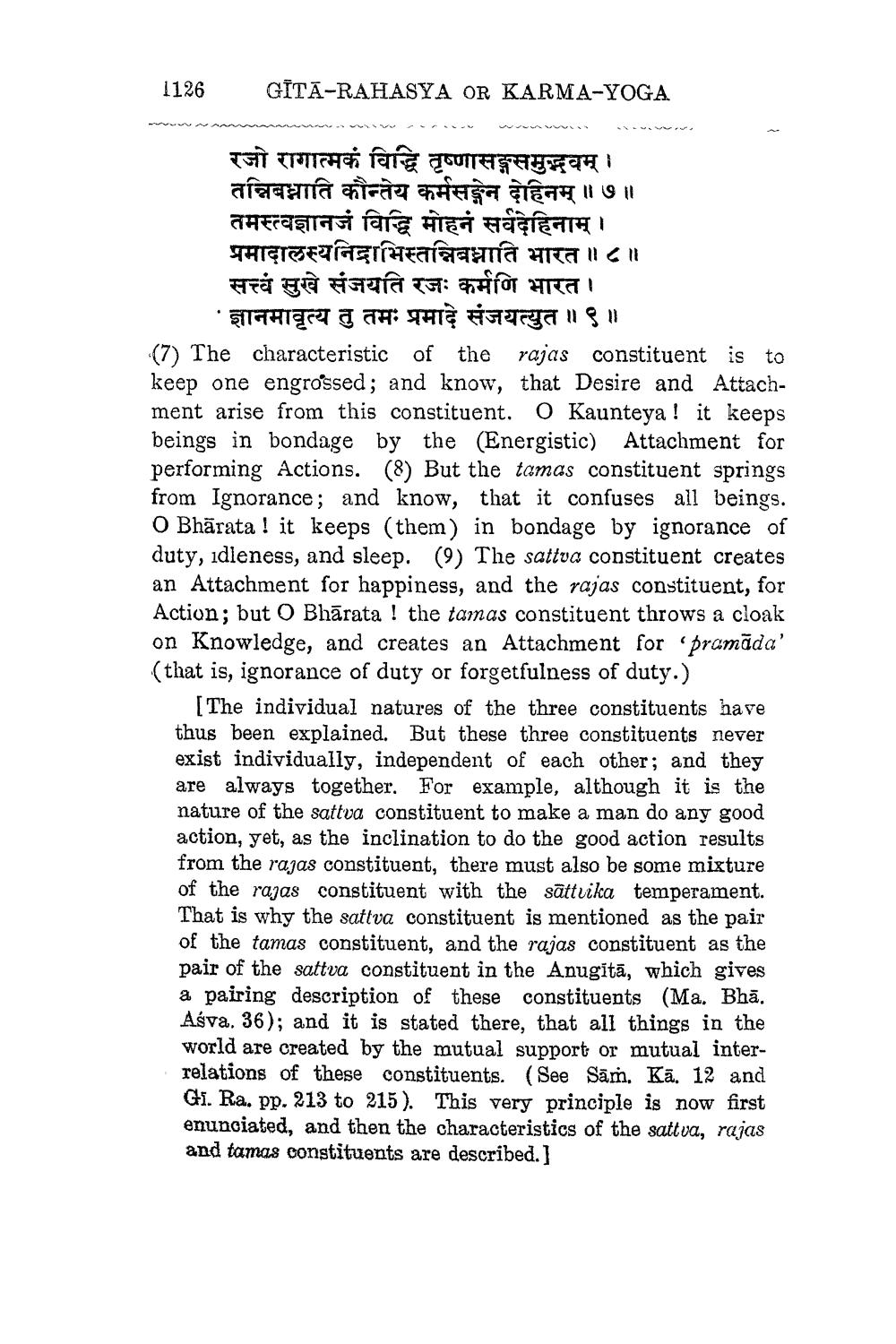________________
1126
GĪTĀ-RAHASYA OR KARMA-YOGA
रजो रागात्मकं विद्धि तृष्णासङ्गसमुद्भवम् । तन्निबध्नाति कौन्तेय कर्मसङ्गेन दोहनम् ॥७॥ तमस्त्वज्ञानजं विद्धि मोहनं सर्वदेहिनाम् । प्रमादालस्यनिद्राभिस्तन्निबध्नाति भारत ॥८॥
सत्त्वं सुखे संजयति रजः कर्मणि भारत।
'ज्ञानमावृत्य तु तमः प्रमादे संजयत्युत ॥९॥ (7) The characteristic of the rajas constituent is to keep one engrossed; and know, that Desire and Attachment arise from this constituent. O Kaunteya! it keeps beings in bondage by the (Energistic) Attachment for performing Actions. (8) But the tamas constituent springs from Ignorance; and know, that it confuses all beings. O Bhārata ! it keeps (them) in bondage by ignorance of duty, idleness, and sleep. (9) The sattva constituent creates an Attachment for happiness, and the rajas constituent, for Action; but o Bhārata ! the tamas constituent throws a cloak on Knowledge, and creates an Attachment for promāda' (that is, ignorance of duty or forgetfulness of duty.)
[The individual natures of the three constituents have thus been explained. But these three constituents never exist individually, independent of each other; and they are always together. For example, although it is the nature of the sattva constituent to make a man do any good action, yet, as the inclination to do the good action results from the rajas constituent, there must also be some mixture of the rajas constituent with the sättvika temperament. That is why the sattva constituent is mentioned as the pair of the tamas constituent, and the rajas constituent as the pair of the sattva constituent in the Anugitā, which gives a pairing description of these constituents (Ma. Bhā. Ašva. 36); and it is stated there, that all things in the world are created by the mutual support or mutual interrelations of these constituents. (See Sām. Kā. 12 and Gi. Ra. pp. 213 to 215). This very principle is now first enunciated, and then the characteristics of the sattva, rajas and tamas constituents are described.]




